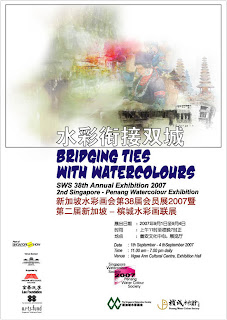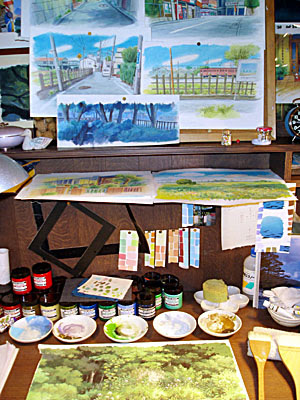 A rather heavy heart tonight, do want to pray but find it difficult to start. It's worse because one knows exactly why. An email, a phone call this afternoon made me realized how little I can really care about the golden commandment. Back home after DG, I flipped almost involuntarily to this passage in C.S Lewis' classic essay which I have read so many times in the past, but which strikes the conscience sharply every time:
A rather heavy heart tonight, do want to pray but find it difficult to start. It's worse because one knows exactly why. An email, a phone call this afternoon made me realized how little I can really care about the golden commandment. Back home after DG, I flipped almost involuntarily to this passage in C.S Lewis' classic essay which I have read so many times in the past, but which strikes the conscience sharply every time:
"It is a serious thing to live in a society of possible gods and goddesses, to remember that the dullest and most uninteresting person you talk to may one day be a creature which, if you saw it now, you would be strongly tempted to worship, or else a horror and a corruption such as you now meet, if at all, only in a nightmare. All day long we are, in some degree, helping each other to one or other of these destinations. It is in the light of these overwhelming possibilities, it is with the awe and the circumspection proper to them, that we should conduct all our dealings with one another, all friendships, all loves, all play, all politics. There are no 'ordinary' people. You have never talked to a mere mortal. Nations, cultures, arts, civilisations -- these are mortal, and their life is to ours as the life of a gnat. But it is immortals whome we joke with, work with, marry, snub and exploit -- immortal horrors or everlasting splendours. This does not mean that we are to be perpetually solemn. We must play. But our merriment must be of that kind (and it is, in fact, the merriest kind) which exists between people who have, from the outset, taken each other seriously -- no flippancy, no superiority, no presumption. And our charity must be a real and costly love, with deep feeling for the sins in spite of which we love the sinner -- no mere tolerance or indulgence which parodies love as flippancy parodies merriment."
--C. S. Lewis, From The Weight of Glory
So easy for me to say : "Love Thy Neighbour". How many times have I chosen to love those only who are more interesting, more beautiful, more happy, or those who can love me back. So easy to procrastinate a phone call back to a lonely faraway friend, to hasten a boring conversation, ignore an email, and avoid the funny-shaped sheep of Christ.
But for the help of God, it is impossible to love.
























